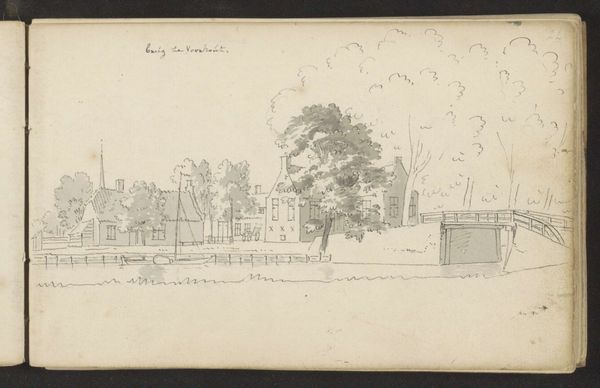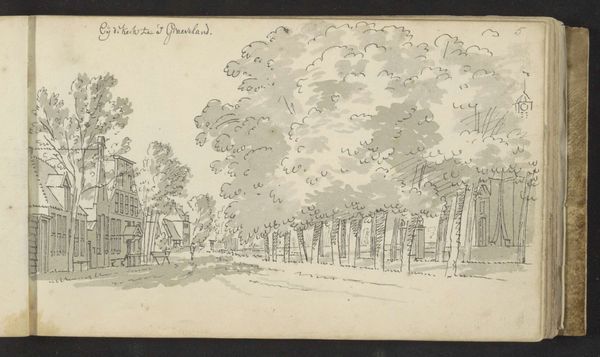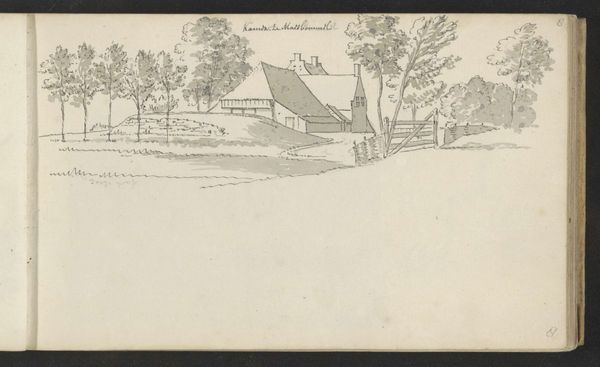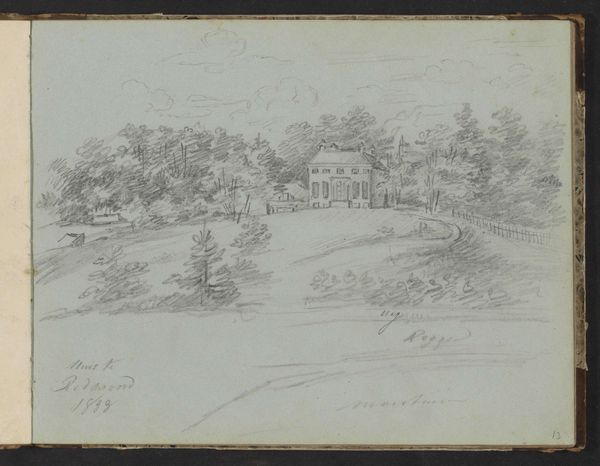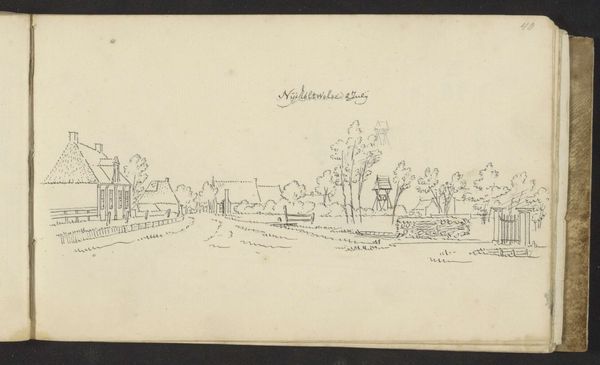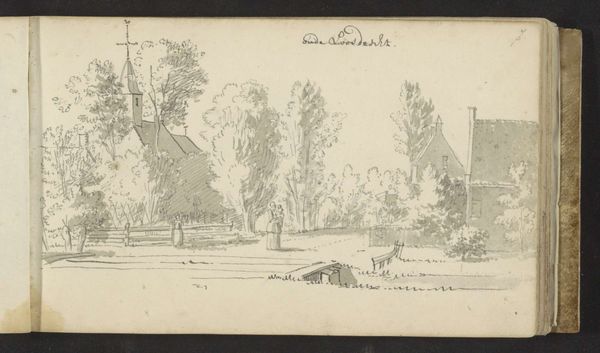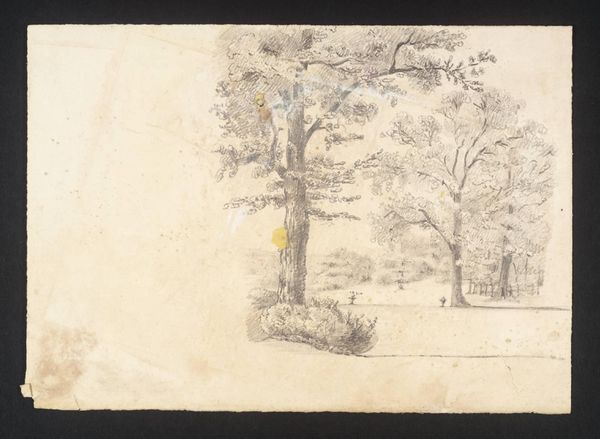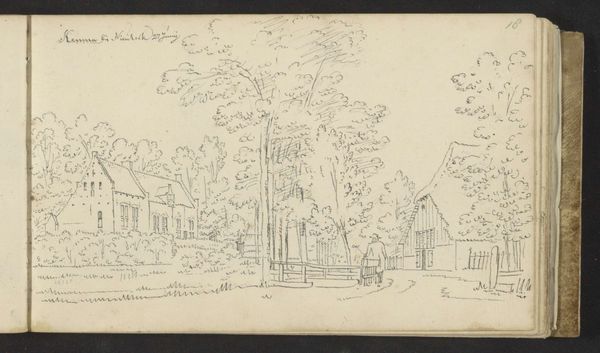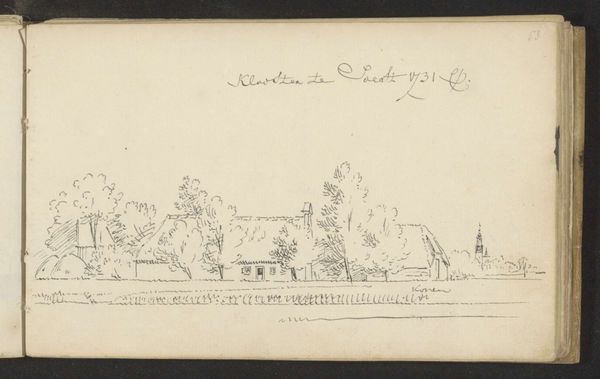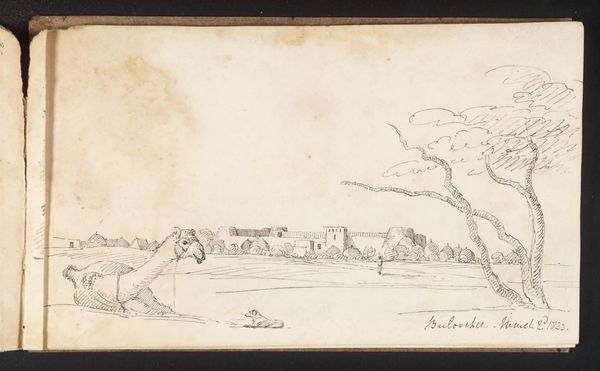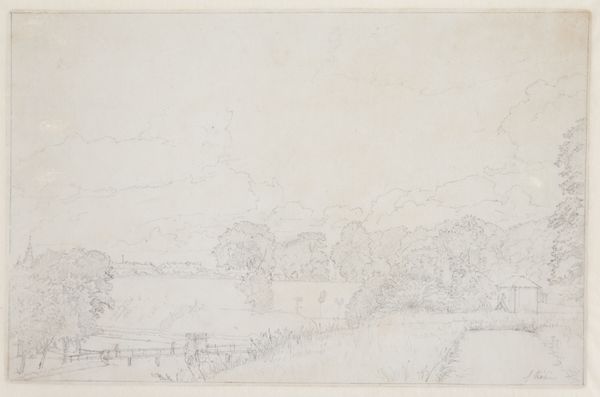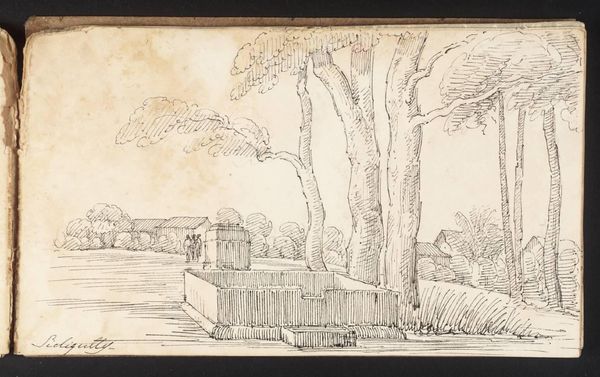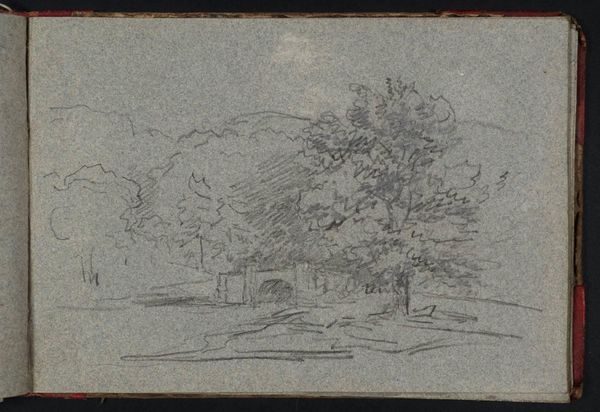
drawing, paper, ink
#
drawing
#
aged paper
#
baroque
#
pen sketch
#
sketch book
#
incomplete sketchy
#
hand drawn type
#
landscape
#
paper
#
personal sketchbook
#
ink
#
pen-ink sketch
#
pen work
#
sketchbook drawing
#
genre-painting
#
sketchbook art
Dimensions: height 128 mm, width 207 mm
Copyright: Rijks Museum: Open Domain
Editor: So, here we have "Dorpsgezicht te Mastenbroek," a pen and ink drawing on paper, possibly created between 1732 and 1736 by Abraham de Haen the second. It has the feeling of a quick sketch from a travel journal or personal sketchbook. What do you make of this scene, in terms of its historical context? Curator: Well, seeing a landscape like this from the 1730s provides a unique window into the Dutch countryside at that time. These 'genre paintings,' as they are tagged, were quite popular. One wonders about the public to which it may have been displayed and the socio-economic situation that prompted such themes. What kind of imagery was prevalent at the time, and what were the political associations between these two? Editor: That’s interesting. It also feels very immediate, like we're seeing something candid. Does the fact that it's a sketch change how it would have been received versus a more polished painting? Curator: Absolutely. A sketch often feels more intimate, more personal. Consider who would have had access to such works. Was it intended for wider circulation, or confined to a more exclusive audience of art collectors and other painters? Were sketchbooks viewed with as much significance back then? Perhaps the "incomplete sketchy" impression is intentional and can tell a story of its own. What kind of narratives would these suggest at the time it was created? Editor: It makes you think about how art consumption has changed. So, looking at the socio-political side of things, it provides this really rich area of exploration. Curator: Precisely! And it encourages us to think about what seems universal versus what's profoundly shaped by historical conditions and evolving values. Editor: That makes you think of how museums like the Rijksmuseum preserve and present this piece and others like it to shape these stories for current viewers, doesn't it? It’s something I had not initially considered. Curator: Precisely! I’m glad we could exchange ideas, I hope to have widened your horizons.
Comments
No comments
Be the first to comment and join the conversation on the ultimate creative platform.
